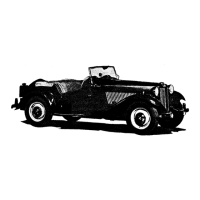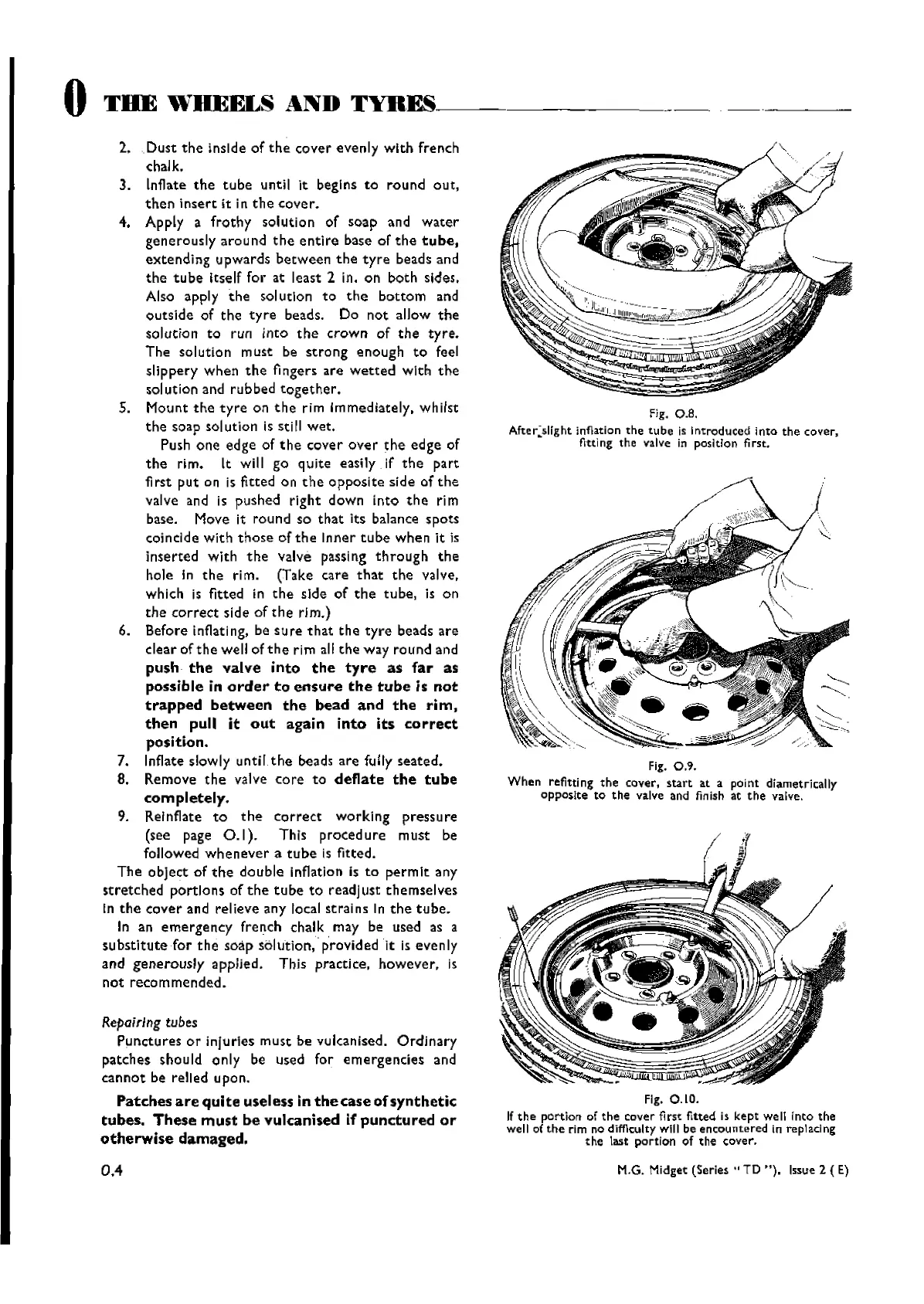o
THE
"''"HEELS
AND
TYRES,--------
2. Dust
the
inside of
the
cover evenly with french
chalk.
3. Inflate
the
tube until it begins to round out,
then
insert it in
the
cover.
4. Apply a frothy solution of soap and water
generously around
the
entire base of
the
tube,
extending upwards between
the
tyre
beads and
the
tube
itself for at least 2 in. on both sides.
Also apply the solution to
the
bottom and
outside of the
tyre
beads. Do not allow
the
solution to run into
the
crown of the eyre.
The solution must be strong enough to feel
slippery when
the
fingers are
wetted
with
the
solutlon and rubbed together.
5. Mount
the
tyre
on
the
rim Immediately, whilst
the soap solution is still wet.
Push one edge of
the
cover over
the
edge of
the
rim. It will go quite easily if
the
part
fi rst put on is fitted
on
the
opposite side of
the
valve and is pushed right down into
the
rim
base. Move it round so
that
its balance spots
coincide with those of
the
Inner
tube
when it is
inserted with
the
valve
passi
ng through
the
hole In the rim. (Take care
that
the valve.
which is fitted in
the
side of
the
tube, is on
the correct side of
the
rlm.)
6. Before inflating, be
sure
that
the
tyre
beads are
clear of
the
well
ofthe
rim all the way round and
push
the
valve
into
the
tyre
as
far
as
possible
in
order
to
ensure
the
tube
;s
not
trapped
be~een
the
bead
and
the
rim,
then
pull
it
out
again
into
its
correct
position.
7. Inflate slowly until
the
beads are fully seated.
8. Remove
the
valve core to
deflate
the
tube
completely.
9. Reinflate
to
the
correct
working pressu re
(see page
0.1).
This proced ure must be
followed whenever a
tube
is fitted.
The object of
the
double inflation is to permit any
stretched portions of
the
tube
to read]ust themselves
In
the
cover and relieve any local strains In
the
tube.
In an emergency french chalk may be used as a
substitute for
the
soap solution,'
provldedlt
is evenly
and generously applied. This practice, however. is
not recommended.
Repairing
tubes
Punctures or injuries must be vulcanised. Ordinary
patches should only be used for emergencies and
cannot be relied upon.
Patches
are
qui
te
usel
ess
in
the
case
of
synthetic
tubes.
These
must
be
vulcanised
if
punctured
or
otherwise
damaged.
0,4
Fig.
0.8.
After~5light
inflation
the
tube
is Introduced
into
the
cover,
flul
ng the valve in position f
rst,
Fig.
0.9.
When
refitting
the
cover,
start
at a point diametrically
opposIte to
the
valve and finish at
the
valve.
Flg.O.lO.
If
the
portjon of
the
cover first fitted is
kept
well Into the
well of
the
rim no difficulty wlll be
encountered
in replacing
the
last
portion
of the cover.
M.G. Midget (Series
"TO
").
Issue 2 ( E)
Wishvilles Classic
Automobile Library

